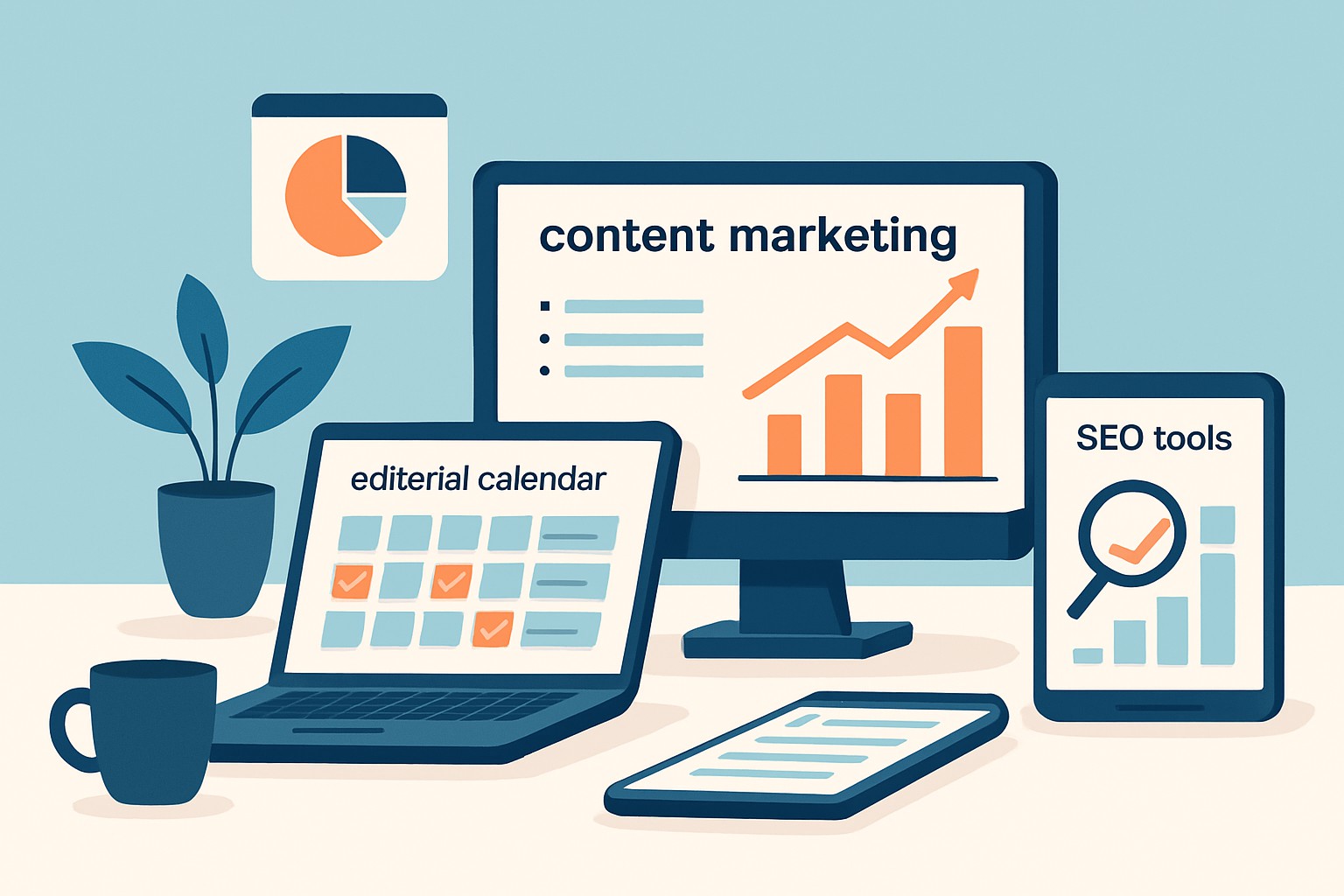
Best book on SEO for beginners and seasoned pros
Master SEO with the best book on SEO tailored for beginners and pros alike. Explore top picks, exper...

Content marketing for publishers truly holds the spotlight for those aiming to expand their audience and establish solid authority in their niche. It also helps uncover fresh avenues to boost revenue through richer engagement in today’s fiercely competitive media landscape.
Content marketing for publishers is all about crafting and sharing material that truly clicks with a specific audience—stuff that’s relevant and genuinely valuable. Rather than just blasting out sales pitches like traditional marketing often does, content marketing takes the road less traveled by building relationships through informative stories and expert insights.
Creating engaging content begins with truly understanding your audience and what makes them tick. When publishers take the time to dig into their readers’ demographics and interests they can tailor their messages and formats to really hit home.
Start gathering basic demographic details like age, location and interests—usually through surveys and user sign-ups that aren’t as painful as they sound.
Use reader surveys to get direct no-nonsense feedback about what really tickles their fancy, their favorite topics and any struggles they might be facing.
Dive into website analytics to get the lowdown on visitor behavior. See which pages steal the spotlight and when your audience is most likely to drop by.
Craft detailed reader personas that capture the quirks and traits that matter most along with their unique content needs—it’s like building a mini cast of characters for your strategy.
Keep an eye on how your audience consumes content to figure out which formats and subjects hit home and which ones might need a little rethinking.
Crafting a spot-on content marketing strategy is like hitting the sweet spot between your goals and what your audience truly cares about and the resources you have for publishing. It spells out clear objectives and picks themes and formats that genuinely echo your brand’s voice. It also lays out a publishing schedule that fits snugly with newsroom workflows.

A publishing team collaboratively working on an editorial calendar during a content marketing strategy session
Create content that truly strikes a chord by zeroing in on quality and relevance with a good story—storytelling is what keeps people hooked. From what I’ve seen, publishers hit the sweet spot when they stick to solid editorial standards and sprinkle in multimedia elements to keep things lively. They also fine-tune everything for search engines and mobile devices.
To reach the right readers publishers usually need a thoughtful game plan for distribution and promotion. In my experience mixing things up with organic social sharing, email campaigns, SEO and strategic partnerships plus some paid advertising usually does the trick
Keeping an eye on KPIs is a important part of really grasping how your content is performing and figuring out where tweaks might be needed. Publishers usually get the most bang for their buck by regularly checking in on engagement numbers and audience trends to fine-tune everything from topics to formats and distribution methods.
| Metric | Description | Why It Matters | How to Track |
|---|---|---|---|
| Page Views | How often a page gets loaded | Offers a handy glimpse into your content’s overall reach and popularity—think of it as the headcount at your digital party | Google Analytics, site analytics dashboards |
| Time on Page | The average time visitors hang out on a page | Gives a clue about how engaging and relevant your content really is; in my experience, the longer they stick around, the better | Analytics platforms like Google Analytics |
| Bounce Rate | Percentage of visitors who take a quick exit after one page | Tells you if your content hits the mark or if people are bouncing off faster than you would like | Google Analytics, other web analytics tools |
| Conversion Rate | Percentage of visitors completing key actions (subscriptions, signups) | Shows how well you’re transforming casual visitors into loyal customers—because, let’s face it, numbers don’t lie | CRM, email marketing tools, analytics |
| Social Shares | How many times your content gets passed around on social media | Helps spread the word far and wide, giving your brand a nice visibility boost along the way | Social media analytics and third-party tools |
Keep an eye on your analytics regularly to spot trends, noticeable spikes in traffic or frustrating slowdowns.
Figure out which pieces of content are stealing the show to understand what clicks with your audience.
Experiment with A/B tests on headlines, formats and calls to action—it’s the best way to fine-tune how people engage with your content.
Adjust your publishing frequency based on how your audience reacts and what resources you have in your toolbox.
Listen closely to audience feedback from comments, surveys and social media—it’s like having a sneak peek into what could make your future content better.
Publishing teams frequently hit snags in their content marketing for publishers, such as tight resources and an overwhelming flood of content hitting the market. Audience interests also seem to change on a whim.
"Staying persistent and flexible in content marketing is often what separates the winners from the rest of the pack. Stay open to change, really listen to your audience, and keep fine-tuning your strategy—it’s a bit like gardening, you’ve got to nurture it patiently and adjust as things grow." – A leading content marketing strategist
14 articles published
Driven by a passion for innovation and a deep understanding of consumer behavior, Cadence Ballantyne challenges conventional wisdom, offering fresh perspectives that inspire businesses to forge new paths in the ever-evolving digital realm.
Read Pages
Master SEO with the best book on SEO tailored for beginners and pros alike. Explore top picks, exper...

Unlock top affiliate earnings in the investment niche by promoting high paying programs like Semrush...

New to content marketing? This beginner-friendly guide breaks down the essentials to help you start...

Learn practical retail content marketing strategies designed to boost foot traffic. Discover how to...